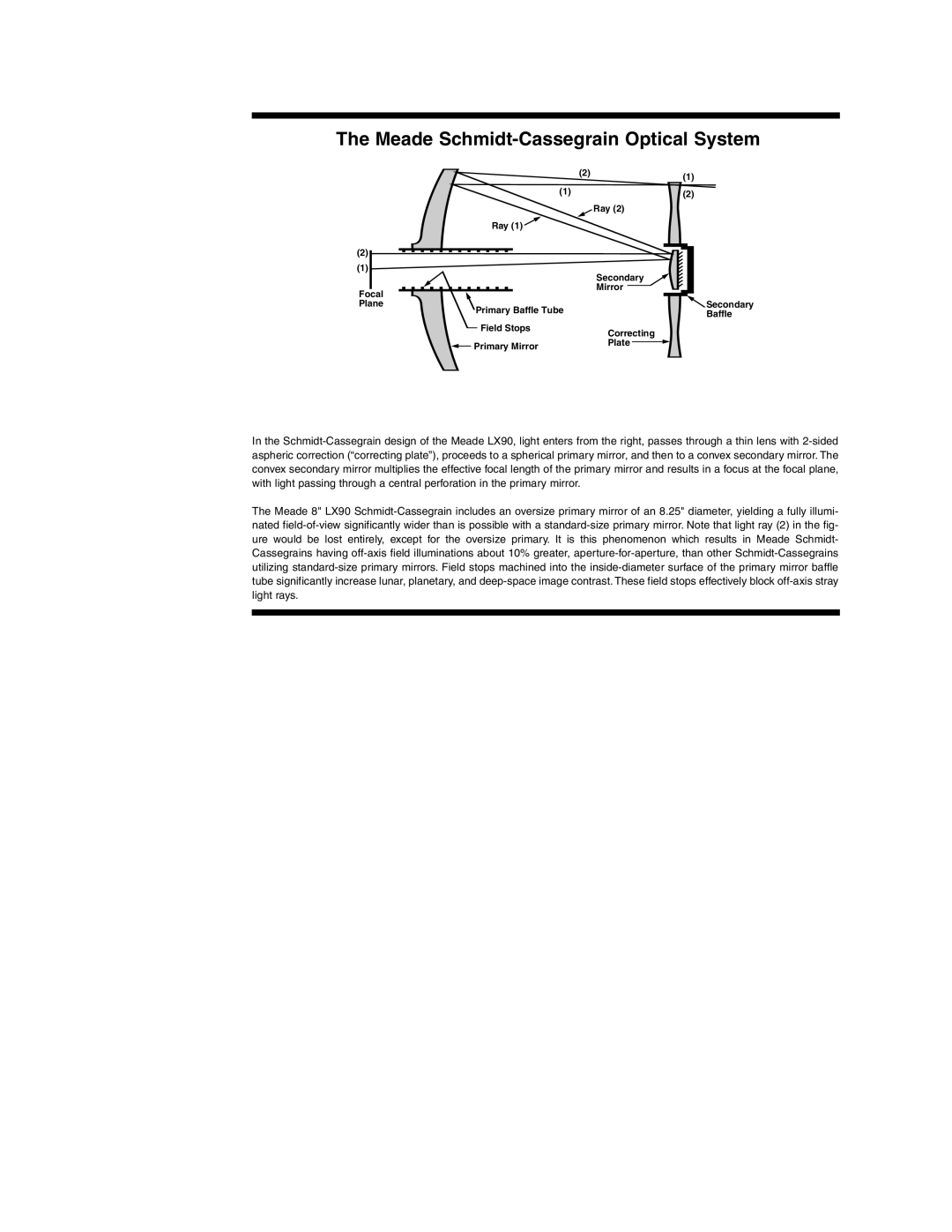The Meade Schmidt-Cassegrain Optical System
| (2) | (1) |
| |
(1) | | (2) |
| | Ray (2) |
Ray (1) | | |
(2) | | |
(1) | | Secondary |
| |
Focal | | Mirror |
| |
Plane | | Secondary |
Primary Baffle Tube | | Baffle |
Field Stops | | Correcting |
| |
Primary Mirror | | Plate |
| |
In the Schmidt-Cassegrain design of the Meade LX90, light enters from the right, passes through a thin lens with 2-sided aspheric correction (“correcting plate”), proceeds to a spherical primary mirror, and then to a convex secondary mirror. The convex secondary mirror multiplies the effective focal length of the primary mirror and results in a focus at the focal plane, with light passing through a central perforation in the primary mirror.
The Meade 8" LX90 Schmidt-Cassegrain includes an oversize primary mirror of an 8.25" diameter, yielding a fully illumi- nated field-of-view significantly wider than is possible with a standard-size primary mirror. Note that light ray (2) in the fig- ure would be lost entirely, except for the oversize primary. It is this phenomenon which results in Meade Schmidt- Cassegrains having off-axis field illuminations about 10% greater, aperture-for-aperture, than other Schmidt-Cassegrains utilizing standard-size primary mirrors. Field stops machined into the inside-diameter surface of the primary mirror baffle tube significantly increase lunar, planetary, and deep-space image contrast. These field stops effectively block off-axis stray light rays.

